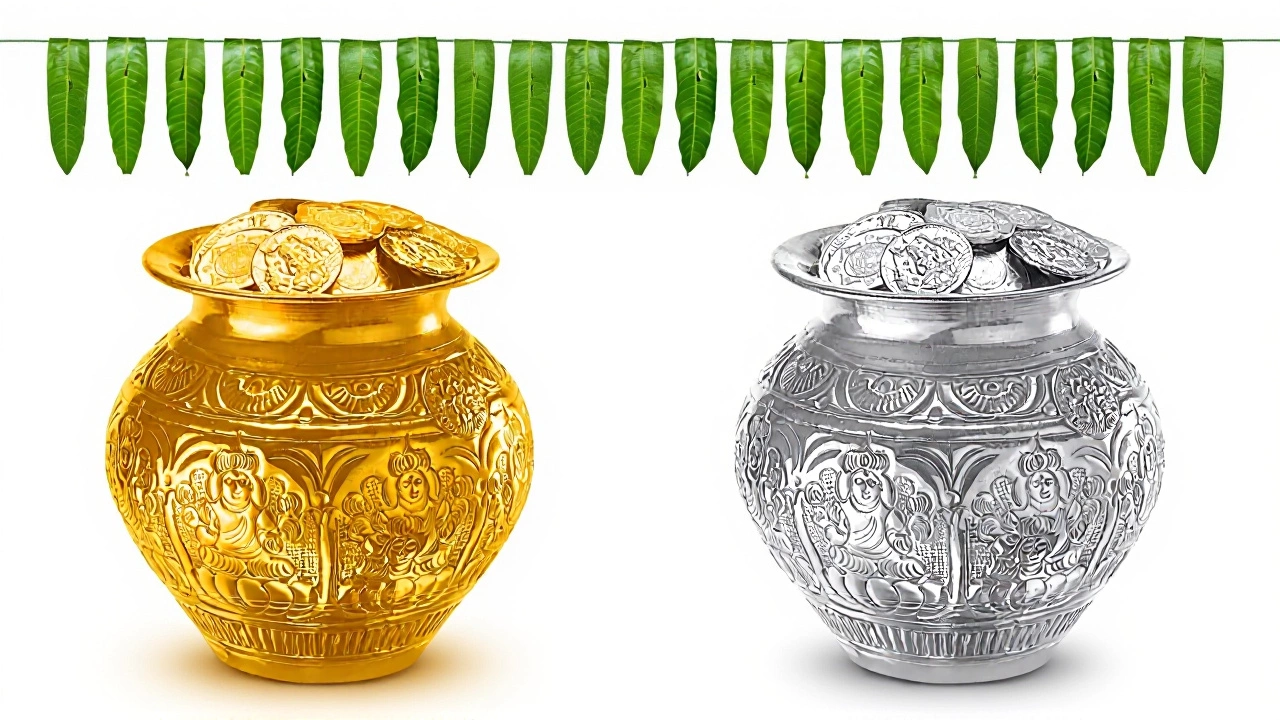When All India Bullion Association announced on Monday, September 29, 2025, that both gold and silver had smashed previous records, shoppers in Delhi barely had time to react.
In a flash, 99.9 % pure gold leapt by ₹1,500 per 10 grams to close at a staggering ₹1,19,500, while silver surged ₹7,000 per kilogram, topping out at ₹1.5 lakh per kilogram. The jump, described by market watchers as a "rocket‑like" surge, left ordinary buyers wondering if they’d ever be able to afford a modest gram of the yellow metal again.
Why the Sudden Spike?
Here’s the thing: a perfect storm of global forces converged to push the numbers sky‑high. The U.S. dollar, traditionally a drag on precious‑metal prices, kept weakening against major currencies throughout September. At the same time, geopolitical jitters – from renewed tensions in Eastern Europe to uncertain outcomes of the upcoming U.S. mid‑term elections – drove investors toward safe‑haven assets.
During the Delhi Bullion Market SurgeDelhi, traders reported a flood of buying activity, especially from first‑time investors who see gold as a hedge against inflation. “We’re seeing a classic flight‑to‑safety play,” said Chintan Mehta, CEO of Abans Financial Services. “When the dollar slips, every gram of gold suddenly feels like a piece of security.”
From August’s Rollercoaster to September’s Rocket
Just a month earlier, the market was a different animal. On August 12, 2025, gold had plunged by ₹1,000 per 10 grams after a flurry of sell‑offs triggered by a surprise statement from then‑U.S. President Donald Trump on social media about eliminating duties on gold imports. The All India Bullion Association had recorded 99.9 % pure gold at ₹1,01,520 per 10 grams – a sharp dip from the preceding week’s ₹1,02,520.
Back then, the market was jittery, waiting to see if the White House would actually follow through. The announcement that high‑level tariffs on China would be postponed until November 11 gave a brief sigh of relief, but the price momentum never fully recovered until the September bounce.
Impact on Everyday Buyers
Turns out the new highs aren’t just numbers on a screen – they affect real people. A middle‑class family in South Delhi, who usually saves for a small gold ornament during festivals, now faces a price tag that’s roughly 12 % higher than just a few weeks ago. “I’m planning to buy a gold chain for my daughter’s birthday, but now I’m thinking of waiting,” said Sunita Sharma, a shop‑owner who prefers to stay anonymous.
Small jewelers are also feeling the squeeze. With wholesale rates climbing, many are passing the cost onto customers, which could dampen demand for traditional gold jewellery during upcoming celebrations like Diwali.
Historical Performance: A Quick Look
- 2020: Gold +28.25 %, Silver +41 % vs. Sensex +16 %
- 2021: Gold +4 %, Silver +8 % vs. Sensex +22 %
- 2022: Gold +14.38 %, Silver +11 % vs. Sensex +4.4 %
- 2023: Gold +15 %, Silver +75 % vs. Sensex +19 %
- 2024: Gold +21 %, Silver +17 % vs. Sensex +8 %
- 2025 (YTD): Gold +41 %, Silver +33 % vs. Sensex +4.11 %
These figures help explain why, even as prices spike, investors still rush to lock in a piece of metal. The returns, especially for silver in 2023, have been eye‑popping compared with equities.
What Comes Next?
Looking ahead, analysts are split. Some warn that if the U.S. dollar continues its slide, we could see another round of price hikes – maybe even crossing the ₹2 lakh per kilogram mark for silver. Others point to possible stabilisation if the Federal Reserve hints at raising rates to curb inflation.
Meanwhile, the Indian government is watching closely. The Ministry of Finance has hinted at reviewing import duties on gold, which could either ease the pressure or, if tightened, push prices even higher.
For now, anyone thinking of buying gold or silver should weigh the immediate cost against the long‑term hedge potential. As Chintan Mehta summed up, “It’s a classic dilemma – pay more now or risk paying even more later.”
Key Takeaways
- Gold reached ₹1,19,500 per 10 g; silver hit ₹1.5 lakh per kg on 29 Sept 2025.
- Weak US dollar and global uncertainty drove safe‑haven demand.
- Prices are now a barrier for average Indian consumers.
- Historical returns for precious metals remain robust versus equities.
- Policy moves on import duties could swing prices one way or the other.
Frequently Asked Questions
How will the price surge affect first‑time gold buyers?
First‑time buyers will likely face higher entry costs, meaning a 10‑gram gold coin that cost ₹1,02,000 a month ago now commands around ₹1,19,500. This could push many to postpone purchases or consider smaller denominations, such as 1‑gram bars, to stay within budget.
What caused the sharp silver price jump?
Silver’s rally mirrored gold’s, driven by a weaker dollar and heightened geopolitical risk. Additionally, industrial demand from electronics and renewable‑energy sectors has been rising, adding a speculative edge to its price climb.
Could upcoming policy changes reverse the price trend?
If the Indian Ministry of Finance reduces import duties on gold, wholesale prices could soften, offering relief to buyers. Conversely, higher duties would cement the current upward pressure, potentially pushing prices even higher.
Is buying silver now a better investment than gold?
Both metals are buoyant, but silver’s 33 % YTD return outpaces gold’s 41 % only slightly. Silver’s industrial link makes it more volatile, so risk‑averse investors might still favour gold for its traditional store‑of‑value status.
What should consumers watch for in the next three months?
Key signals include U.S. Federal Reserve rate decisions, any shifts in the dollar‑index, and the Indian government’s stance on gold import tariffs. Any of these could tip the market either toward further spikes or a short‑term correction.

